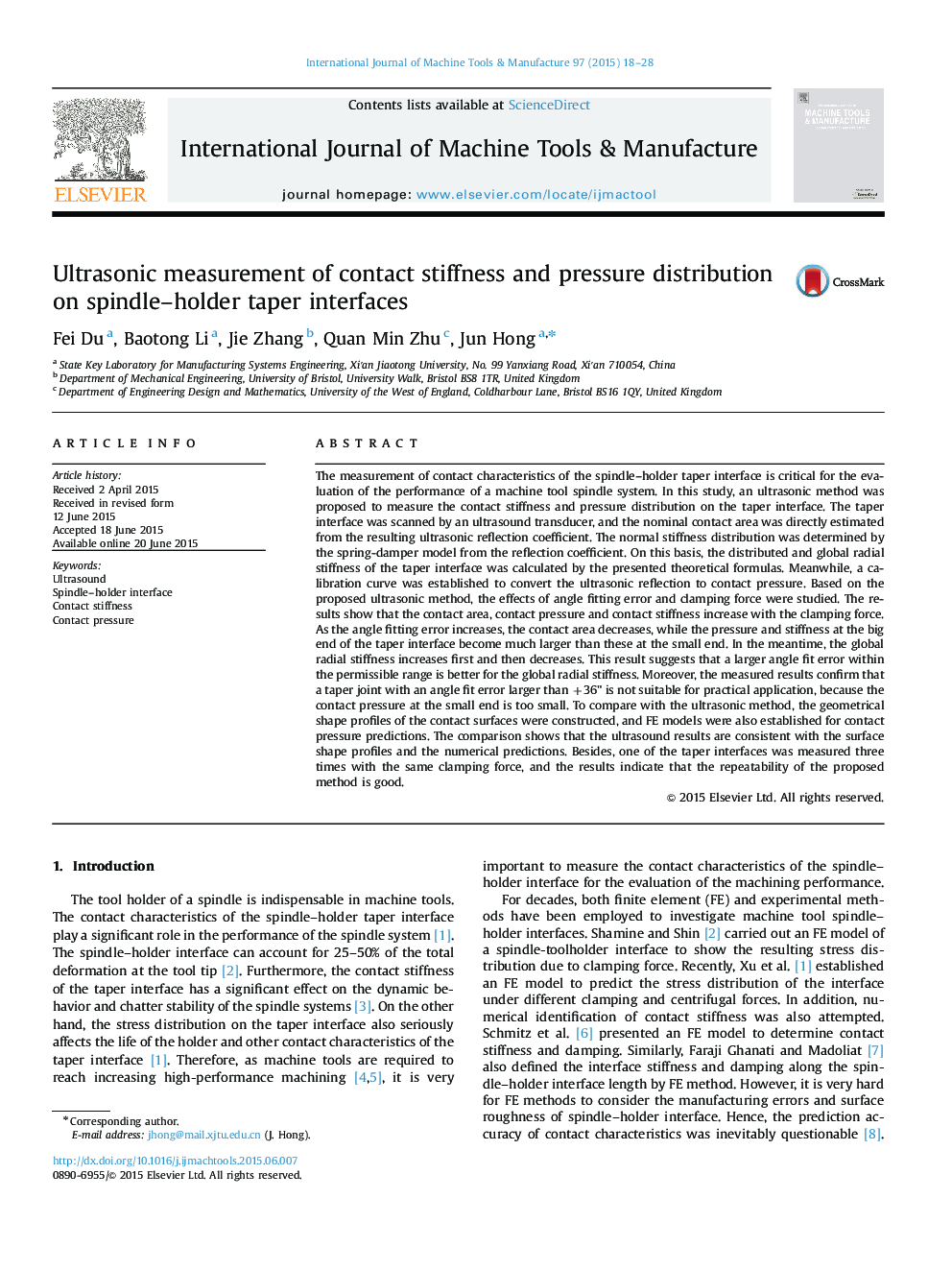| کد مقاله | کد نشریه | سال انتشار | مقاله انگلیسی | نسخه تمام متن |
|---|---|---|---|---|
| 784339 | 1464496 | 2015 | 11 صفحه PDF | دانلود رایگان |
• Stiffness and pressure on taper interfaces were measured by an ultrasonic method.
• Ultrasonic results agree with surface shape profiles and numerical predictions.
• The slops of pressure and stiffness distributions increase with the fitting error.
• Global radial stiffness does not decrease with the increase of angle fitting error.
The measurement of contact characteristics of the spindle–holder taper interface is critical for the evaluation of the performance of a machine tool spindle system. In this study, an ultrasonic method was proposed to measure the contact stiffness and pressure distribution on the taper interface. The taper interface was scanned by an ultrasound transducer, and the nominal contact area was directly estimated from the resulting ultrasonic reflection coefficient. The normal stiffness distribution was determined by the spring-damper model from the reflection coefficient. On this basis, the distributed and global radial stiffness of the taper interface was calculated by the presented theoretical formulas. Meanwhile, a calibration curve was established to convert the ultrasonic reflection to contact pressure. Based on the proposed ultrasonic method, the effects of angle fitting error and clamping force were studied. The results show that the contact area, contact pressure and contact stiffness increase with the clamping force. As the angle fitting error increases, the contact area decreases, while the pressure and stiffness at the big end of the taper interface become much larger than these at the small end. In the meantime, the global radial stiffness increases first and then decreases. This result suggests that a larger angle fit error within the permissible range is better for the global radial stiffness. Moreover, the measured results confirm that a taper joint with an angle fit error larger than +36" is not suitable for practical application, because the contact pressure at the small end is too small. To compare with the ultrasonic method, the geometrical shape profiles of the contact surfaces were constructed, and FE models were also established for contact pressure predictions. The comparison shows that the ultrasound results are consistent with the surface shape profiles and the numerical predictions. Besides, one of the taper interfaces was measured three times with the same clamping force, and the results indicate that the repeatability of the proposed method is good.
Journal: International Journal of Machine Tools and Manufacture - Volume 97, October 2015, Pages 18–28
